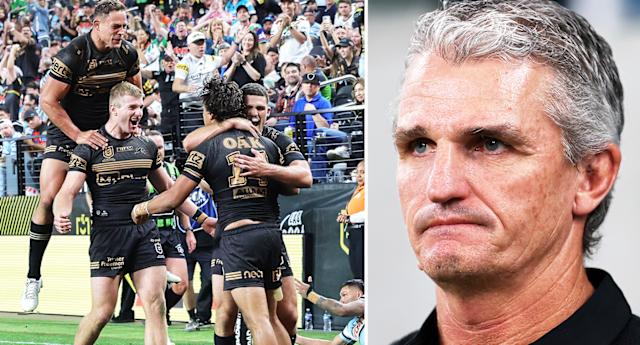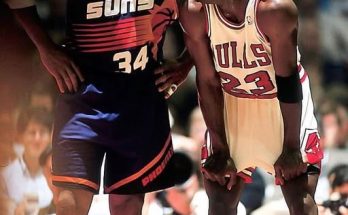The Penrith Panthers have once again found themselves at the center of off-season drama as news broke that one of their players will not have his contract renewed, even as a teammate secures a move to a Queensland club. This development has sent shockwaves through the NRL community, highlighting both the ruthlessness of professional sports and the shifting dynamics within the Panthers squad as they prepare for the next season. Fans and analysts alike have been quick to speculate on the implications of these moves, considering both the immediate impact on team performance and the longer-term strategic planning of the club.
Contract renewals and player movements are always a critical part of the NRL calendar, and the Panthers’ latest shake-up is no exception. The player whose contract will not be renewed has been a part of the team for several seasons, contributing both on and off the field. While the decision not to extend the contract is undoubtedly a professional one, it carries significant emotional weight for fans who have followed the player’s journey with the club. From impressive performances in high-pressure matches to moments of leadership in the locker room, the player’s tenure at Penrith has been marked by dedication and resilience. Despite this, the club’s management appears to be looking toward a different vision for the team, one that requires recalibration of the roster and perhaps a focus on younger talent or players who fit a new tactical approach.
In contrast, the teammate who has secured a move to a Queensland club represents the other side of the professional sporting equation: opportunity and advancement. Moving to a new club often comes with the promise of increased playing time, exposure, and the chance to make a significant impact in a different environment. Queensland clubs have historically been competitive and have offered platforms for players to elevate their careers, and this move is no doubt seen as a positive step by the athlete involved. For the Panthers, losing a player to a rival state may feel like a blow, but it also underscores the reality that player movement is a constant in the NRL, with clubs and athletes continuously balancing ambition, loyalty, and career progression.
The timing of these announcements has added another layer of intrigue. Coming so close together, the contract non-renewal and the teammate’s signing with a Queensland club create a narrative of transition within the Panthers camp. Analysts have suggested that the club may be deliberately reshaping its roster to pursue a new style of play or to manage salary cap considerations, both of which are crucial in modern professional sports. Balancing talent retention with financial strategy is always a delicate process, and the Panthers’ decisions illustrate the difficult choices that teams must make behind the scenes. The non-renewal, while disappointing for the player and fans, may free up resources to recruit emerging talent or secure marquee signings that align with the club’s long-term goals.
For the players involved, these developments are deeply personal as well as professional. The player not receiving a renewed contract faces the challenge of navigating the free-agent market, assessing potential opportunities with other clubs, and potentially relocating to continue their career. Meanwhile, the player moving to a Queensland club must adjust to a new team culture, coaching philosophy, and regional environment, all while maintaining peak performance on the field. Both situations require resilience, adaptability, and a focus on long-term career development, reminding fans that professional athletes operate in a world defined by constant change and uncertainty.
The impact on team morale and locker room dynamics cannot be understated. Teammates who have formed bonds with both departing players will need to adjust to new team structures and leadership hierarchies. Coaches and support staff will play a pivotal role in managing this transition, ensuring that remaining players stay motivated and cohesive as the club heads into pre-season training. Historically, teams that navigate such transitions effectively often emerge stronger, leveraging new signings and promoting internal talent to create a refreshed and competitive squad. However, mismanagement of these changes can lead to unrest or a dip in performance, emphasizing the importance of strategic planning at both the management and coaching levels.
Fan reactions to these developments have been varied. Social media platforms are awash with commentary, ranging from disappointment over the departure of a popular player to excitement about potential new talent that could be brought in to replace them. Supporters are particularly invested in how these moves will affect the team’s chances in upcoming competitions, and debates over whether the club made the right decisions are already heating up. In many ways, this discourse reflects the broader passion and engagement that the NRL inspires, with fans closely scrutinizing every aspect of player management, on-field performance, and strategic direction.
The broader context of the NRL landscape also plays a role in understanding these moves. Player movement across state lines, particularly from New South Wales clubs to Queensland clubs, has always carried both competitive and symbolic significance. Queensland clubs have traditionally offered strong development pathways and competitive contracts, making them attractive destinations for players seeking to advance their careers. Meanwhile, New South Wales teams like the Panthers must balance the retention of key talent with the need to remain competitive while adhering to salary cap constraints. These broader structural factors highlight how individual contract decisions are not made in isolation but are influenced by league-wide trends, competitive pressures, and the financial realities of professional sport.
From a strategic standpoint, the Panthers’ management may also be looking to reshape the team’s playing style or inject fresh energy into key positions. Non-renewal of contracts and the movement of players can open up opportunities to recruit athletes with specific skill sets or physical attributes that better align with the coach’s vision. For example, a focus on speed, versatility, or defensive robustness may dictate recruitment priorities, and releasing a player who does not fit that profile can be a calculated risk aimed at long-term success. At the same time, retaining experienced players in other positions ensures continuity and preserves the club’s institutional knowledge, striking a balance between renewal and stability.
The timing of the Queensland signing is particularly noteworthy because it underscores the competitive nature of talent acquisition in the NRL. Clubs are constantly scouting for players who can make an immediate impact while also contributing to the team’s long-term growth. For the athlete moving to Queensland, the decision likely reflects a combination of career ambition, contract security, and the opportunity to play a leading role within a new squad. From the perspective of the Panthers, losing a player to another club is a reminder of the highly competitive market for talent, where retention strategies must be proactive and forward-looking to avoid losing key contributors to rival teams.
Media coverage of these developments has been extensive, with journalists and analysts dissecting every angle. Reports have highlighted both the financial and tactical implications, as well as the personal stories behind the players involved. Interviews with insiders have suggested that the decisions were made after careful consideration, reflecting a blend of performance metrics, player potential, and alignment with the club’s strategic goals. For fans, this behind-the-scenes insight provides a glimpse into the complex world of professional sports management, where every decision carries weighty consequences and the margin for error is often small.
Looking ahead, the Panthers face the challenge of integrating new talent, maintaining team cohesion, and ensuring that on-field performance does not suffer as a result of these departures. Pre-season training will be critical in establishing new routines, building chemistry among players, and ensuring that the squad is ready to compete at the highest level. Coaches and support staff will need to emphasize both physical preparation and psychological resilience, recognizing that transitions of this nature can affect confidence and focus if not managed effectively. The club’s ability to navigate this period successfully will have a significant bearing on their prospects in the upcoming season.
For the players themselves, the next steps are equally critical. The athlete whose contract was not renewed will need to evaluate offers from other clubs, consider the impact of relocation, and ensure that their skills remain sharp and marketable. Networking, training, and performance in trial matches or off-season competitions may all play a role in securing a new contract. Meanwhile, the player moving to Queensland must quickly adapt to their new environment, build rapport with teammates, and demonstrate that they can perform at a high level in a different competitive context. Success in these endeavors requires not only talent but also professionalism, adaptability, and mental fortitude.
Ultimately, these developments serve as a reminder of the ever-changing landscape of professional rugby league. Player contracts, transfers, and strategic team decisions are an inherent part of the sport, reflecting both the competitive nature of the NRL and the personal ambitions of the athletes involved. While fans may experience disappointment or excitement depending on the situation, the broader narrative is one of evolution and adaptation, with clubs constantly seeking ways to optimize performance and achieve long-term success.
In conclusion, the Penrith Panthers’ recent off-season moves—the non-renewal of one player’s contract alongside a teammate’s transfer to a Queensland club—highlight the complexities of professional sports management and the human stories behind each decision. These developments underscore the delicate balance between loyalty, opportunity, and strategic planning, illustrating how clubs and players alike navigate a landscape defined by competition, ambition, and change. As the Panthers prepare for the upcoming season, the eyes of fans, analysts, and rivals will remain firmly on the team, eager to see how these decisions play out on and off the field. The coming months will test both the club’s management and the players’ adaptability, ultimately shaping the trajectory of the Panthers in a season where every choice matters and every game counts.
This narrative of change, challenge, and opportunity is emblematic of the professional sporting world, offering insight into the pressures, decisions, and dynamics that define life at the highest levels of rugby league. For the Penrith Panthers, it marks the beginning of a new chapter—one that will require strategic foresight, player resilience, and a commitment to maintaining the club’s reputation as one of the NRL’s most competitive and ambitious teams.



